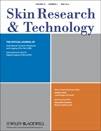Skin surface hydration decreases rapidly during long distance flights
Abstract
Introduction
Dehydration of the stratum corneum leads to sensations and symptoms of ‘dry skin’ such as skin tightness and itchiness. As these complaints are frequently experienced by airline travellers, the aim of this study was to investigate the changes in skin surface hydration during long distance flights.
Methods
The study was performed on four healthy Caucasian, and on four Japanese women aged 29–39 years, travelling on long distance flights. They had stopped using skin care products at least 12 h before, and did not apply them during the flights. The air temperature and relative humidity inside the cabin, as well as skin capacitance of the face and forearm of participants, were registered at several time points before and during the flights.
Results
Relative humidity of the aircraft cabin dropped to levels below 10% within 2 h after take-off and stayed at this value throughout the flight. Skin capacitance decreased rapidly on both the face and forearms with most pronounced changes on the cheeks where it decreased by up to 37%.
Conclusion
Our results demonstrate that during long distance flights, the aircraft cabin environment leads to a rapid decrease in stratum corneum hydration, an alteration, which probably accounts for the discomfort experienced by long distance aircraft travellers.




